This project located in Ecuador, in one of the most extreme weather, we faced serious challenges to create a project more incorporated with
the environment using passive shading techniques and vernacular design approaches to self shade most of our building with minimum
costs.
First lets start with our first proposal which consists of a very rigid design solution composed of a tower and a podium,
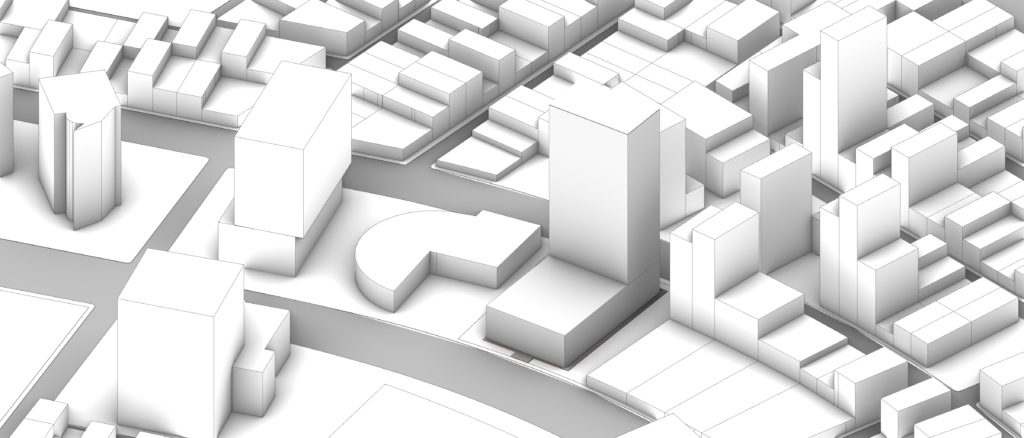
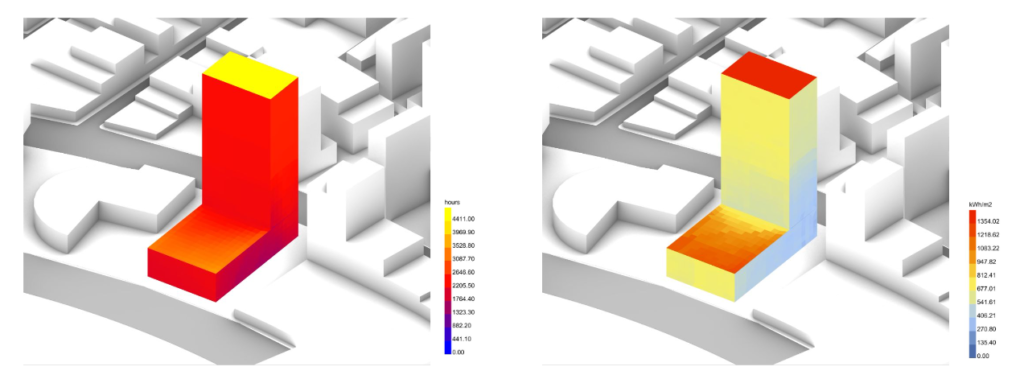
So we decided to do some simple modifications to the shape to make the interior spaces of the building more comfortable.
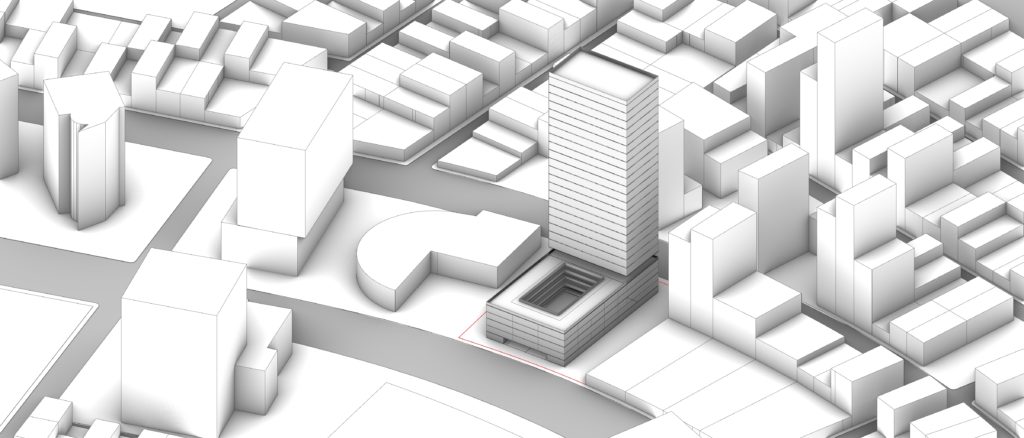
As we can see in the proposal 2 we create a courtyard in the podium to reduce the amount of heat on the roof and let the daylight enter the ground floor, this will also allow some cross ventilation to reduce the heat in the courtyard. The courtyard will be shaded passively by the building itself. We also lifted the building on pilotis to create another cross ventilation and to reduce the heat on the podium’s roof which we plan to turn it to a green space for the people.
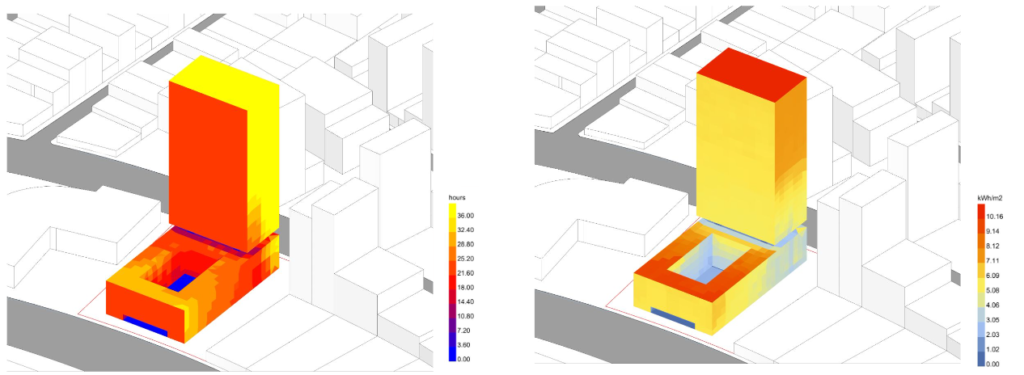
we ran the simulation again and we can see that the radiation in the courtyard is less more and we can the building self shade itself.
For further more passive shading we tried another iteration of our project which insist in extruding additional modules on the main facade.
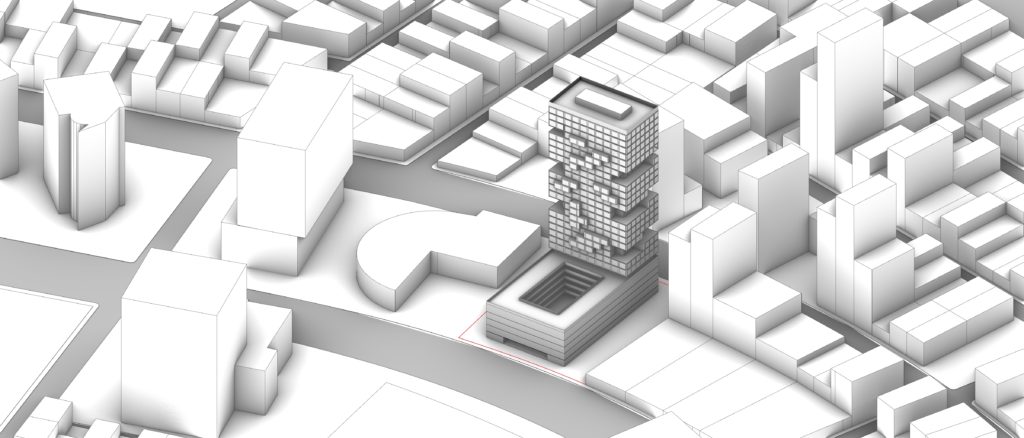
Proposal number 3 using reduction on the building edges this resulted in the creation of a passive shading, green terraces for the users and a passive wind flow passage
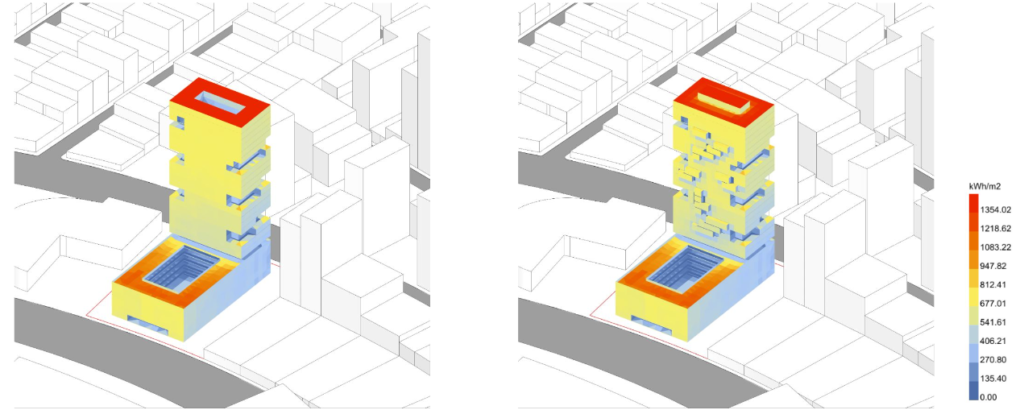
In this study we can see a comparison of the radiation analysis on the main facade between two iterations of the proposal 3 where we are using extruded modules on the right to self shade our building.
After we explored some passive solutions to tackle the heat radiation on the facades and the courtyards we then passed to the UTCI studies to make the courtyard more comfortable for the users

In this UTCI analysis we explored the effect of trees on the building’s courtyard and roof garden, we can see that trees makes our plaza and roof more cooler

Here we experimented by adding a shading element in the center of the courtyard and we can see that it’s reducing the overall temperature from 38 to 32 degrees.. Through this study we found out that through passive shading and natural elements we can create more comfortable spaces.
Moving to the daylight factor analysis we tried different variables impacting our DF such as the windows dimensions, materiality and shading elements such as vertical and horizonal louvres

Finally regarding the Wind analysis , we studies the effect of the building on the existing wind flow and its effect on the surrounding building


As we can see the building if considered as one single block can create strong wind currents in between the neighboring buildings resulting in some cases a danger for the pedestrian lives.
So in conclusion we studied different environmental studies impacting different aspects of the building such as solar hours, radiation analysis, UTCI factors, Daylight factor and CFD analysis to come up with design techniques to try and translate those studies into design decisions.

